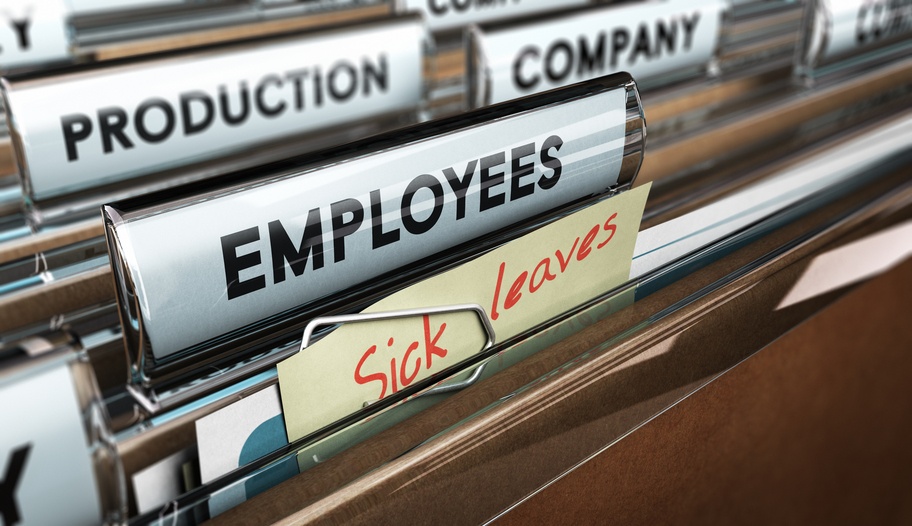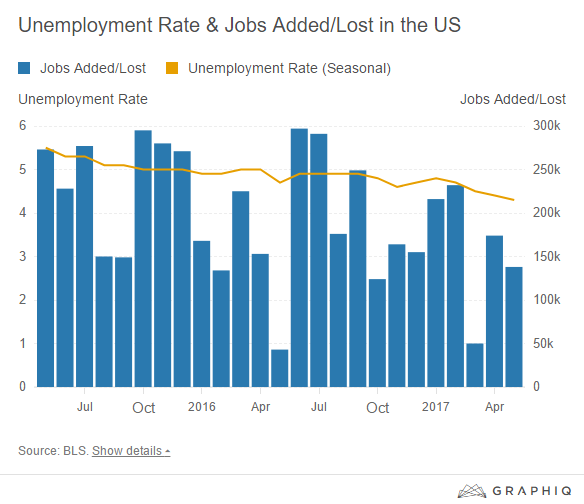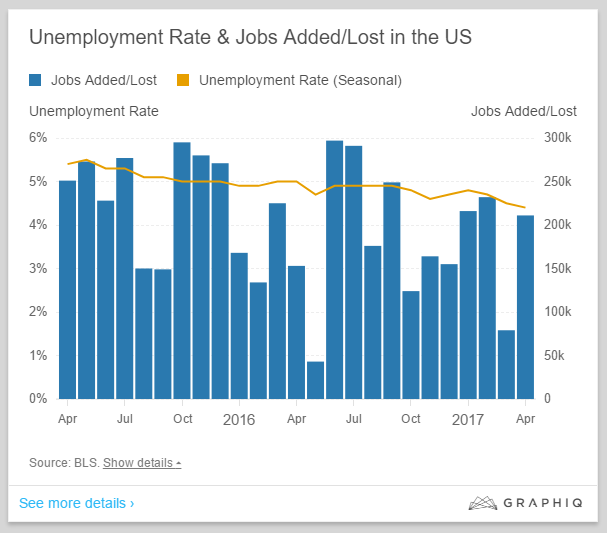The labor market clearly continues to perfrom well as this report exceeded economists' forecasts of 180,000 new jobs. Hiring in June was revised to a faster rate than previously reported, by 9,000 jobs to 231,000. The gain in jobs marked the 82nd straight month of U.S. job growth, the longest ever on record, as the U.S. has now regained all the jobs lost in the 2008 global economic recession.
The leisure and hospitality industry added 62,000 jobs last month, or nearly one in every three jobs created, led by restaurants. Retail hiring, which has slowed this year amid mass department-store closings, increased for the first time since January by 900 on net. General-merchandise stores such as Walmart, hired a net 4,200 workers.
Wage growth remained sluggish in July, with average hourly earnings increasing by 0.3% month-on-month — as expected — and 2.5% year-on-year (compared with 2.4% expected). Wages should actually grow at a faster pace than this because the low unemployment rate suggests that the supply of workers available for hire is limited. Lower worker productivity and a decline in unionization are among the reasons pay isn't rising faster. But wages are increasing faster for lower-paying jobs.
The share of Americans over 16 who were active in the workforce rose in July to 62.9% from 62.8%. One group that has been returning to the jobs market at a quick rate is prime-age workers ages 25 to 54. Their labor-force-participation rate rose to a new postrecession high of 78.7%, showing that the nine-year-old economic expansion had attracted them back into the workforce.
There were plenty of reasons for optimism: Hiring was up across several sectors, including home health-care services and metal-ore mining, which both grew 0.8 percent. But the biggest driver of jobs growth was the hospitality industry, the jobs report said. The sector added 53,000 jobs last month—and has added 313,000 jobs so far this year.
Contact Unemployment Tracker for information on effective Unemployment Insurance cost management.
.png?width=864&height=165&name=uet-2logos%20(1).png)





